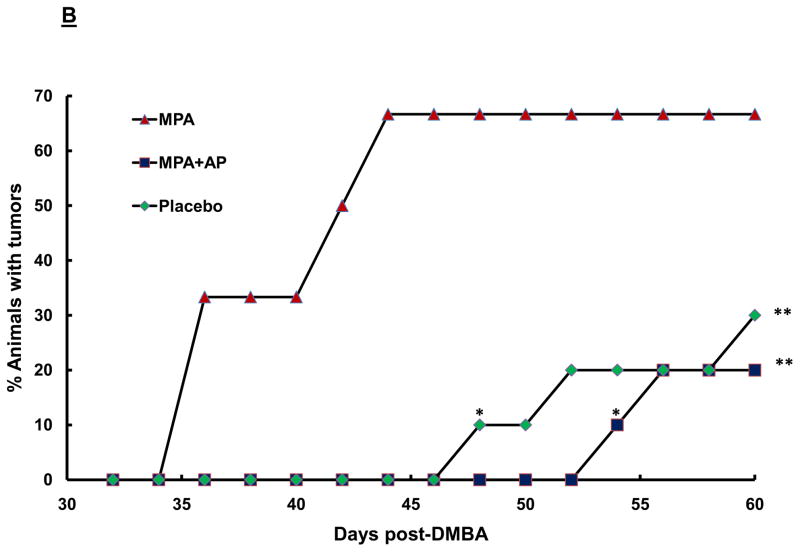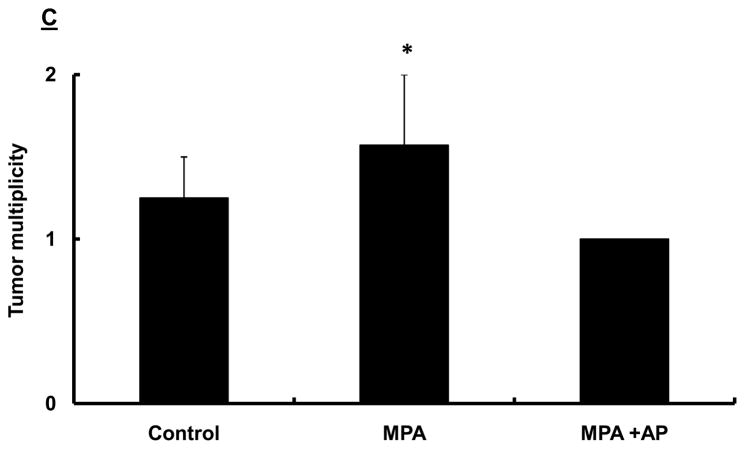Figure 1. Apigenin prevents progression of DMBA-induced progestin accelerated tumors in rats.
(A) Treatment Protocol. Sprague-Dawley rats were treated with DMBA and subsequently implanted with a 25 mg/60-day release MPA (or placebo) pellet on day 28 as described in the Materials and Methods. Apigenin (AP; 50 mg/kg) or vehicle injections were given once daily between days 21 and 31 following DMBA treatment. Following pellet implantation, animals were palpated for tumors every other day through day 60. (B) Preventive effect of apigenin on MPA-accelerated DMBA-induced mammary tumors. The percent of animals with tumors in each experimental group at each time point is presented (n=6–10 animals/group). Tumor latency was assessed using LIFETEST procedure in SAS as described in the Materials and Methods; * indicates p<0.05 compared with tumor latency in the MPA-treated group. Tumor incidence was determined using the General Linear Mixed Model procedure in SAS as described in the Materials and Methods; ** indicates P<0.05 compared with tumor incidence at day 60 in the MPA-treated group. (C) Effect of apigenin on tumor multiplicity. The mean number of tumors per tumor-bearing animal at the conclusion of the study in B (60 days after DMBA treatment) is presented. * indicates p<0.05 compared with the other two groups; error bars represent SEM. (D) Dose-response effects of apigenin on MPA-accelerated DMBA-induced mammary tumors. Experimental details are as described above except that varying amounts of apigenin were used as indicated in the figure. 10AP, 10 mg/kg dose of AP; 25AP, 25 mg/kg dose of AP, and 50AP, 50 mg/kg dose of AP. * indicates p<0.05 compared with MPA-treated group (latency) and ** indicates p<0.05 compared with MPA-treated group at day 60 (incidence). Combined results from two different experiments are shown (n=10–20 animals/group).




